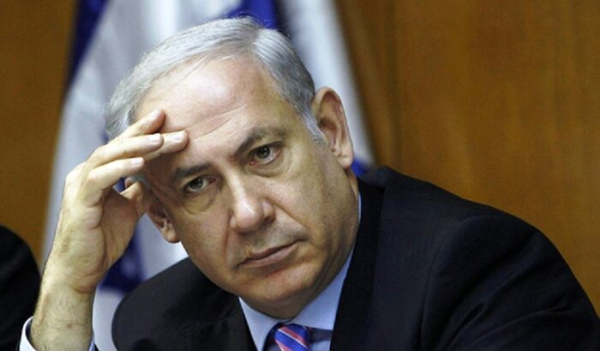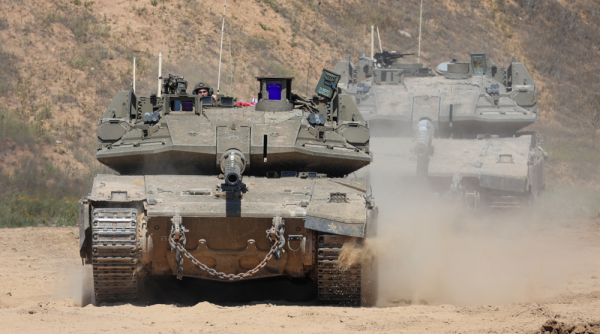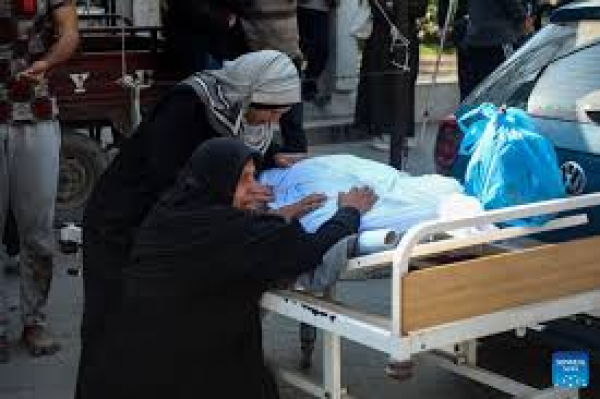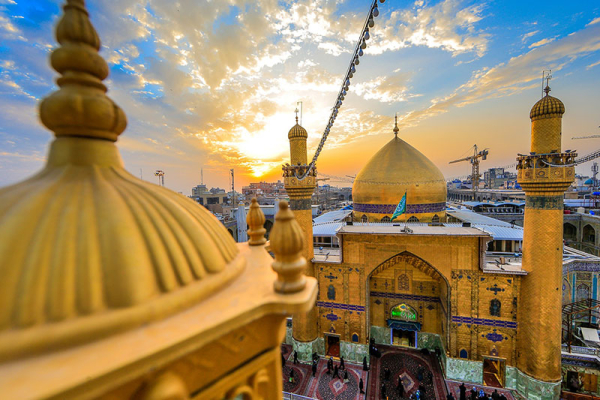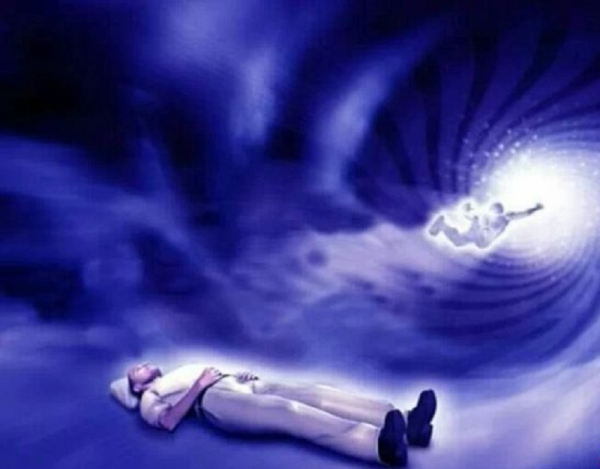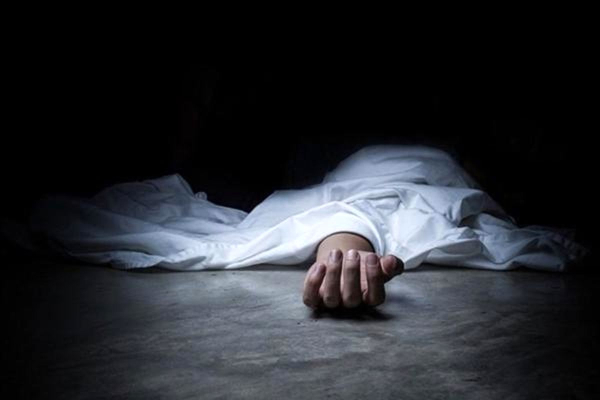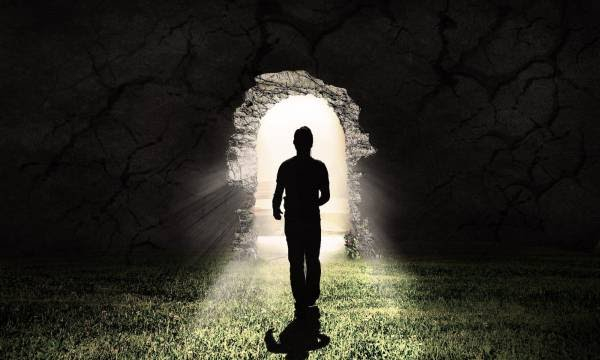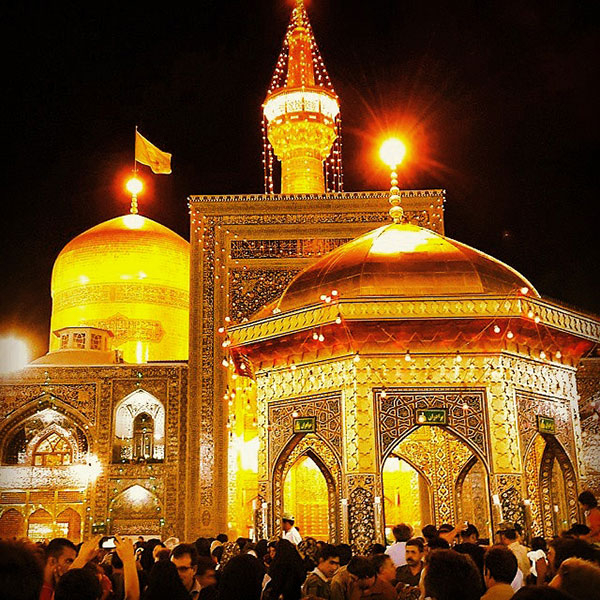zarezadeh
‘Humanity means nothing to Israel’: Top Indian MP blasts brutal Israeli airstrikes on Gaza
The general secretary of India's National Congress (INC) has strongly condemned the “cold-blooded murder” of hundreds of Palestinian civilians by Israel in the Gaza Strip, saying the recent killing shows that “humanity means nothing” to the occupying regime.
Priyanka Gandhi Vadra made the remarks in a post on X on Wednesday, a day after over 400 Palestinians, including women and children, were massacred in renewed Israeli attacks on Gaza.
“The cold-blooded murder of over 400 innocent civilians, including 130 children, by the Israeli [regime] shows that humanity means nothing to them,” Priyanka said.
She went on to say that Israel's actions reflect an "inherent weakness and inability to face their own truth," while criticizing “the complicity” of Western powers.
“Whether Western powers choose to recognize this or to acknowledge their collusion in the genocide of the Palestinian people or not, all citizens of the world who have a conscience (including many Israelis), see it,” she said.
The leader of India's main opposition party further noted that the more “criminally” the Israeli regime acts, “the more they reveal themselves for the cowards they truly are.”
“On the other hand, the bravery of the Palestinian people prevails. They have endured unimaginable suffering yet their spirit remains resilient and unwavering,” she said.
Over 400 Palestinians, including women and children, were killed on Tuesday after the occupying entity resumed its merciless war on Gaza, undermining the fragile two-month-long truce agreement with the Palestinian resistance movement Hamas.
Overnight Israeli airstrikes on Gaza, which were the deadliest since a ceasefire began in the besieged territory, drew a wave of condemnations worldwide.
The surprise airstrikes have raised fears of fully reigniting the 17-month-long genocidal onslaught on Gaza.
Israel launched its brutal war on Gaza on October 7, 2023, but the regime failed to achieve its declared objectives despite killing more than 48,000 Palestinians, mostly women and children.
The Tel Aviv regime accepted the Palestinian resistance movement Hamas’s longstanding negotiation terms under the three-phase Gaza truce, which began on January 19.
Later, however, Israel refused to move forward to the second stage of the ceasefire, which required it to withdraw the occupation troops from Gaza.
Press TV’s website
A gamble that could backfire: Why Netanyahu resumed war on Gaza
By Hamid Javadi
The world woke up on Tuesday to news of massive Israeli strikes that killed hundreds of Palestinians, including many women and children, across the Gaza Strip—a familiar horror show that had paused briefly when Israel agreed to a ceasefire in January.
The aerial blitzkrieg targeted densely populated areas, makeshift shelters, and residential buildings. Palestinian authorities reported that over 400 people have been killed, mostly women, children, and senior Hamas officials, with hundreds more injured.
Hospitals and civil defense teams in Gaza have been overwhelmed by the wounded.
The renewed offensive comes just 16 days after the first phase of a ceasefire agreement ended. The three-phase deal was intended to bring a definitive end to the war, a full Israeli withdrawal from Gaza, and the release of all remaining Israeli captives held by Hamas since October 7.
It marks the most significant escalation since the fragile ceasefire took effect on January 19. Condemnations poured in from around the world as images of Palestinian civilian bodies wrapped in white shrouds, soaked in blood, circulated on social media and news outlets.
An entire Palestinian family, including the mother of the family Zainab Jargoun, her husband, and their daughters, was perished in Israeli airstrikes that targeted their home in Rafah city, located in the southern Gaza Strip, early this morning.
The United Nations released a statement saying Secretary-General Antonio Guterres was “shocked” by the Israeli airstrikes in Gaza, which resulted in a significant number of civilian deaths. The UN chief, along with many world leaders, including some of Israel’s allies, strongly appealed for the ceasefire to be respected.
But the question is: Why did Israeli Prime Minister Benjamin Netanyahu order the resumption of the no-holds-barred war on Gaza?
To understand the rationale behind this decision, it is important to examine the interplay of domestic pressures, Netanyahu’s own political survival, and a seeming policy shift by the United States under President Donald Trump.
Israeli officials claim the new offensive aims to target Hamas leadership, which has re-emerged to regain control of Gaza. They argue that the renewed attacks will help secure the release of the 59 captives still being held in Gaza.
However, this is hard to believe, as Hamas had been honoring its commitments under the ceasefire deal, releasing Israeli captives in batches as agreed.
It was the Israeli regime that repeatedly violated the deal during its first phase by launching sporadic attacks on Gaza and refusing to move to the second phase, with backing from the United States. The second phase would have included a permanent end to the war and a full withdrawal of occupying forces.
Israel has proposed extending the first phase of the ceasefire by up to 60 days to allow for the release of more captives. Knowing this could strip it of leverage in future negotiations to end the war, Hamas rejected the proposal, calling instead for the second phase of the ceasefire to proceed as previously agreed.
Meanwhile, Israel attempted to impose new terms in the talks, demanding that Hamas continue releasing Israeli captives in exchange for Palestinian prisoners, but without committing to ending the war or withdrawing its forces.
Families of the captives and those already released believe that this approach will only endanger the lives of those still held in Gaza. They have been vocal in their criticism of Netanyahu, accusing him of abandoning their loved ones in favor of military escalation.
An advocacy group representing the families accused the Netanyahu regime of abandoning the remaining captives in Gaza. “We are shocked, angry, and scared about the deliberate disruption of the process to return our loved ones,” the group said in a statement.
While polls show that most Israelis support a ceasefire to bring back the captives, there is a vocal faction of settlers and hardline cabinet members who favor continuing the war until Hamas is “defeated.”
This divide has fueled political tensions within the regime, with many, including some of Netanyahu’s allies, framing a ceasefire as “unpatriotic” and a sign of weakness.
This political faction and their supporters advocate for the complete removal of Palestinians from Gaza, an idea that has gained traction since President Trump floated his contentious plan for the territory, which also includes Israel reclaiming control of settlements it evacuated in 2005.
Gaza under US-Israeli genocide!
Netanyahu relies on this faction to maintain his coalition and prevent its collapse. They believe that brute military force against Palestinians is key to Israel’s own survival.
By resuming the aerial aggression, Netanyahu sought to reinforce his image as a leader unwilling to compromise with Hamas. However, this gamble could backfire and even cost him his job as prime minister, something that he holds very dear.
Ultimately, for Netanyahu, the decision boils down to political survival. The prime minister faces immense pressure from his far-right coalition partners to resume the war. Some hawkish ministers had resigned or threatened to resign in protest of the January ceasefire, jeopardizing Netanyahu’s coalition and his rule.
The Otzma Yehudit (Jewish Power) Party, led by Itamar Ben-Gvir, announced its return to the cabinet following the resumption of hostilities on Tuesday. This move provides Netanyahu with crucial votes as he works to pass a budget bill, a legal requirement to prevent his coalition from collapsing.
The return of Ben-Gvir’s party, which holds six seats in the Knesset, serves as a lifeline for Netanyahu as the deadline to approve the budget approaches.
On a more practical level, it could be argued that Netanyahu used the ceasefire as a tactical retreat to replenish Israel’s arsenal, which is primarily made up of US-supplied weapons and ammunition.
The Israeli military, which had been stretched thin by over 15 months of relentless bombing in Gaza, now possesses capabilities it lacked six weeks ago. Morale among Israeli soldiers had also reached an all-time low, with many defying orders to return to combat.
Since then, warplanes and other military equipment have been repaired, and troops have had time to rest.
It is likely that Netanyahu never truly intended to accept the ceasefire but felt compelled to do so. He may have had no genuine desire to end hostilities but was left with little choice.
However, this could prove to be a miscalculation on the part of Netanyahu and his allies. Just as Israel used the pause to replenish its stocks, so did Hamas.
Hamas and other Palestinian resistance groups mounted fierce resistance during the war. Israeli military commanders were often shocked by how quickly Hamas and other factions regrouped and reemerged in areas of Gaza where Israel had declared them defeated.
In response to the renewed Israeli aggression, Hamas made it clear that Israel would not achieve militarily what it failed to accomplish through negotiations. Israel has sought to dismantle Hamas through both approaches, but neither has succeeded.
Netanyahu’s decision to resume the war also coincides with his ongoing corruption trials and widespread protests against his policies. If convicted, Netanyahu could face prison. On the same day that Israel launched its new strikes on Gaza, a court granted his request to skip a hearing “due to the renewal of the war.”
He could certainly use a distraction on the domestic front. However, this strategy is not without risks. A prolonged military offensive could deepen divisions within Israeli society, particularly if more captives are killed in indiscriminate bombings in Gaza.
Netanyahu, nonetheless, appears willing to take that risk. For him, the war with Hamas is not merely a domestic issue but a critical component of Israel’s regional strategy. By adopting a hardline stance, he may be aiming to send a message to the broader Axis of Resistance.
The Trump administration’s unwavering support for Israel also seems to have been a factor. It has emboldened Netanyahu to pursue a more aggressive strategy in the region, with potentially long-term implications for regional stability.
Alongside strikes on Gaza, the Israeli military has been conducting regular airstrikes on southern Lebanon since reaching a ceasefire deal with Hezbollah to end what was the longest and deadliest war between the two sides.
The renewal of the war on Gaza comes just days after President Trump ordered a massive military strike against Yemen. The Yemeni Ansarullah resistance movement began attacking Israeli-linked shipping in the Red Sea, one of the world’s busiest shipping corridors, shortly after Israel unleashed the genocidal war on Gaza in October 2023.
In ordering the strikes, Trump also vowed to hold Iran accountable for any further attacks by the Yemenis. Iran’s military leadership maintains that if the US or the Israeli regime resorts to any foolhardy military adventure against the country, all American military bases in the region would be annihilated.
Trump, who took credit for the ceasefire between Israel and Hamas shortly before taking office, has made it clear that he would support Netanyahu if he chose to resume the war.
On Tuesday, the White House confirmed that Trump had been consulted “by the Israelis on their attacks in Gaza.”
The resumption of the war in Gaza reverberates far beyond its borders, escalating tensions with Hezbollah, Ansarullah, and the broader Axis of Resistance.
While the official narrative frames the offensive as a strategy to pressure Hamas and secure the release of Israeli captives, the broader motives appear rooted in Netanyahu’s desire to ensure his political survival at home and project power regionally.
For the thousands of Palestinians displaced once again and the families of Israeli captives, the prospects for peace seem as distant as ever.
Hamid Javadi is a senior Iranian journalist and commentator based in Tehran.
Press TV’s website
Israel's war machine launches ground offensive in Gaza to seize Netzarim corridor
The Israeli military has launched a fresh ground assault in central Gaza, targeting the Netzarim corridor in what it calls a “limited operation” to create a “partial buffer” in the territory.
In a post on X, the military wrote that over the past 24 hours, its forces “have begun a focused ground operation in the center of the Gaza Strip and in the south with the aim of expanding the security area and creating a partial buffer between the north and south of the Strip.”
The move appeared to deepen a renewed Israeli offensive in Gaza, which shattered a ceasefire with Hamas that had begun in January.
As part of the ceasefire, Israel had withdrawn from the Netzarim corridor, which it had used as a military zone, and which bisected northern Gaza from the south.
The resumption of the offensive launched by Israel early on Tuesday risks plunging the region back into all-out war.
It came weeks after the end of the first phase of the ceasefire, during which Israel and Hamas exchanged captives for prisoners and were set to negotiate an extension to the truce to end the war.
Israeli minister of military affairs Israel Katz threatened to step up the assault, warning Palestinians in Gaza that Israel would again order evacuations from combat zones soon.
He said that if captives held in the territory weren't freed, “Israel will act with an intensity that you have not seen.”
The Gaza Health Ministry said at least 970 people have been killed since Israel launched the strikes early Tuesday.
Press TV’s website
Death toll from Israel’s renewed offensive on Gaza rises to 970
Gaza’s health ministry says Israel’s renewed savagery has led to the massacre of at least 970 people in 48 hours.
The wave of deadly airstrikes that shattered a fragile ceasefire in Gaza on Tuesday has so far claimed the lives of at least 970 people across the besieged territory, the health ministry said in a statement on Wednesday.
Before the resumption of the offensive, the death toll from the regime’s 15 months of genocidal war recorded by the ministry at midday on March 17 stood at 48,577.
By midday on Wednesday, the figure had risen to 49,547, the ministry said.
The health ministry also registered "one death and five severe injuries among foreign staff working for UN institutions.”
It said Israel attacked a UN headquarters in Deir el-Balah, in the central Gaza Strip, on Wednesday.
The victims had been taken to the Al-Aqsa Martyrs Hospital, the health ministry said.
Israel's military denied attacking a UN building in Gaza.
The UN Office for Project Services (UNOPS) confirmed the death of one of its staff by an explosive that was "dropped or fired" on its building in Deir el-Balah.
"An explosive ordnance was dropped or fired at the infrastructure and detonated inside the building,” it said, adding that five others were injured.
UNOPS Executive Director Jorge Moreira da Silva said he was "shocked and devastated" by the death of a staff member.
“This was not an accident.” he said, adding that "attacks against humanitarian premises are a breach of international law."
Bulgaria's foreign ministry said later in the day that one of its citizens working for the United Nations was killed in Gaza, without specifying where in the territory.
Benjamin Netanyahu of Israel threatened on Tuesday that the massacre of women and children in Gaza was “only the beginning.” He stands accused of committing war crimes and ethnic cleansing in Gaza.
Press TV’s website
Najaf
Najaf or al-Najf al-Ashraf (Arabic: النَّجَف الاَشرَف) (Dignified Najaf) is a Shiite pilgrimage city in Iraq, where the Holy Shrine of Imam 'Ali (a) is located. The city was residential before the emergence of Islam, but after the construction of Imam 'Ali's mausoleum and shrine in 2nd century, it turned into a thriving city to which many Shi'as immigrated. Some kings, including 'Adud al-Dawla al-Daylami, Shah Isma'il, and Shah Tahmasp, as well as certain Qajar kings, contributed to the construction of Najaf.
The Islamic Seminary of Najaf is one of the oldest Islamic seminaries. According to historical accounts, it was founded by al-Shaykh al-Tusi in the 5th century. Many scholars and jurisprudents studied in the Seminary of Najaf, including Al-Shaykh Murtada al-Ansari, Muhammad Kazim Akhund Khurasani, Sayyid Muhammad Kazim Tabataba'i Yazdi, Sayyid Muhsin Hakim, Al-Sayyid Abu l-Qasim al-Khoei, and Sayyid 'Ali Sistani.
The Mosque of al-Shaykh al-Ansari, the Hannana Mosque, and Masjid al-Khadra' are well-known mosques in Najaf. There are many libraries and publication institutes in Najaf, including Haydariyya Library and Print House, Bahr al-'Ulum Library, and Murtadawiyya Print House.
According to 2017 statistics, the population of the city of Najaf amounts to around 800,000, almost all of whom are Muslims and Shi'as.
What does the mind do after death?
The Mind After Death (Near-Death Experiences and Awareness)
One of the most fascinating aspects of death is near-death experiences (NDEs). NDEs are reported by people who were declared clinically dead or near-death and subsequently revived. Commonly reported elements of NDEs include feelings of peace, out-of-body experiences, seeing bright lights, or encountering deceased loved ones.
In a landmark study conducted by Dr. Sam Pernia and his team, NDEs were examined in cardiac arrest patients and published in the journal Resuscitation in 2014. The study found that 40% of patients who were revived after cardiac arrest reported some form of awareness during the period. While clinically dead, some remembered specific details about their surroundings, which raises interesting questions about the nature of consciousness.
While NDEs were once considered merely anecdotal or spiritual, there is now a growing scientific interest in understanding the neurological and biochemical underpinnings of these experiences.
Some researchers suggest that NDEs are related to the brain’s final attempts to make sense of what is happening during a power outage, aided by the release of neurochemicals such as serotonin and DMT.
A leading hypothesis is that NDEs are caused by a lack of oxygen (hypoxia) or reduced blood flow (ischemia) to the brain, which can cause hallucinations and out-of-body experiences. Increased brain activity, seen in the aforementioned studies, may also play a role in these vivid experiences.
While there is no definitive scientific evidence to support the existence of life after death, NDEs suggest that the brain may maintain a level of consciousness even after the heart stops beating.
However, these experiences are highly subjective and can vary greatly from person to person, making it difficult to draw definitive conclusions.
Do neurochemicals and hormones release after death?
In addition to increased brain activity, a key feature of the dying process is the release of neurochemicals and hormones that shape our final experiences.
Endorphins, the body’s natural opiates, are released in large amounts during times of stress or severe psychological trauma, including at the time of death.
They act to reduce pain and induce feelings of euphoria and relaxation, potentially reducing the physical and emotional distress associated with death.
Increased endorphins may contribute to the peaceful, pain-free experiences often reported by people who have died and been revived, even if they suffered serious physical injuries before death.
Serotonin, a neurotransmitter involved in mood regulation and perception, is also believed to be released in large amounts during the dying process.
Increased serotonin levels can lead to altered states of consciousness, including visual and auditory hallucinations. This is the mechanism underlying hallucinogenic substances such as psilocybin, or “magic mushrooms.”
Increased serotonin may explain the vivid imagery and profound spiritual experiences reported by some people during near-death situations.
It is also thought that a large release of DMT occurs at the time of death. DMT is a potent psychedelic compound that is naturally produced in small amounts in the human brain, particularly in the pineal gland.
The effects of DMT include profound changes in perception, feelings of transcendence, and encounters with mystical beings, which closely mirror descriptions of NDEs. (NDEs, or near-death experiences, often involve profound emotions and altered states of consciousness that can vary greatly from person to person. Common descriptions include experiencing a vast emptiness, a sense of isolation or loneliness, and even a sense of doom. Some NDEs are characterized by feelings of euphoria, light, or encounters with deceased loved ones, while others may present darker themes of helplessness or despair. These experiences transcend cultural boundaries and contribute to the debate about consciousness and the possibility of the soul continuing to exist after death.)
Finally, because the body is under extreme stress at the time of death, there is a significant release of adrenaline and noradrenaline.
These hormones are responsible for responding to threat, increasing heart rate and blood pressure in an effort to preserve life.
This surge may lead to heightened awareness and rapid processing of information, potentially contributing to the phenomenon of life review reported by some people, where they experience a rapid replay of life events.
What is brain activity like after death?
Some processes continue for minutes or even hours after clinical death. In fact, during the early stages after clinical death, the body enters a series of stages that scientists call “active death,” in which certain chemicals are released and neuronal activity increases as the brain and body gradually shut down.
A groundbreaking 2013 study in mice showed that within 30 seconds of cardiac arrest, neural activity in various brain regions increases significantly.
This hyperactivity is characterized by synchronous brain oscillations similar to those observed in states of heightened consciousness.
Further research in humans supports the idea of increased brain activity after death. In a 2022 study, researchers observed similar spikes in the brain activity of a human patient after his heart stopped, suggesting that the brain may continue to process information after clinical death.
What is the physical process of death?
Death occurs when the body can no longer maintain its vital functions. This process often begins with organ failure, a gradual shutdown that can be prolonged in some cases, such as terminal illness. The heart stops beating, which cuts off blood flow to the brain, lungs, and other organs.
Without oxygen, the brain begins to die, and within minutes, brain cells are irreparably damaged. When the brain is deprived of oxygen, other organs and systems in the brain begin to die rapidly.
Once the body is clinically dead and resuscitation is no longer possible, the next stage is biological death. This marks the beginning of decomposition, a natural process that breaks down body tissues.
In the first stage of decomposition, known as autolysis, cells begin to break down due to the accumulation of carbon dioxide, which creates an acidic environment inside the cells. Enzymes that were once responsible for maintaining cell function now begin to digest cells from the inside out. This process usually begins within minutes to hours after death.
After autolysis, putrefaction begins. This is when bacteria that were previously controlled by the immune system begin to break down tissues, producing gases that cause the body to swell and emit strong odors. The body turns green because the bacteria break down the hemoglobin in the blood and release sulfur compounds.
Rigor mortis, or stiffening of the muscles, usually begins within two to six hours after death and peaks around 12 hours. This occurs because the body’s energy stores needed to keep the muscles relaxed are depleted.
After about 48 hours, the body’s muscles begin to relax again as the tissues further break down.
In the days and weeks following death, the body continues to decompose, eventually turning into a skeleton. This process is influenced by a variety of factors, including temperature, humidity, and the presence of insects or scavengers.
While clinical death, defined as the cessation of heartbeat and breathing, is instantaneous, the end of the brain and body is not.
What happens at the time of death?
When a person dies, his soul is completely separated from his body, and at this moment, certain events happen to him, and at the time of death, he realizes the end of his life by seeing some things.
What happens to a person at the time of death?
Many of us have heard stories about the moment of death and dying, and we are afraid of that moment and the events that are going to happen to us. At the moment of death, some of the realities that were hidden from a person during his life become clear to him; because at that time, when a person crosses the border of this world, he sees the angel of death and stands on the threshold of the unseen world. In this section of Namnak, we will introduce you to the events that happen at the moment of death.
What does a person see at the moment of death?
At the moment of death, a person's relationship with those around him and those around him are severed; The dying person cannot tell them his observations and explain what is happening to him, nor can those around him understand the information and observations of the dying person and become aware of his condition. Some realities are hidden from man during his lifetime and become clear to him at the moment of death.
The manifestations of believers and disbelievers at the moment of death depend on their actions; believers and righteous people benefit from the miracles of God Almighty and see pleasant and pleasant sights, but disbelievers and hypocrites see the effects of God's wrath and anger in proportion to their fortune and what they have earned in this world.
Angel of Death
At the time of death, humans represent certain things to them, such as Satan and angels. The moment the dying person sees the Angel of Death and the unfamiliar world after death, he realizes that his worldly life has ended, and at this time, he becomes very worried and anxious, and a lot of spiritual pressure is put on him.
A virtuous person sees the angels taking the soul in a good manner, with good news, greetings, and greetings. However, if he is an unbeliever, oppressor, and wrongdoer, he sees the angels as threatening and with frightening faces.
Angels of Recording Deeds
After death, every human being sees the angels of recording deeds and immediately becomes aware of his condition and understands whether he is in Paradise and a person of happiness or in Hell and a person of punishment. Another thing that the dying person sees in the first stages of transition is the angels in charge of sustenance and livelihood.
Imams and Prophets
There is no one whose death approaches, but the Prophet of Islam (peace be upon him and his family) and the infallible Imams (peace be upon them) all materialize and are present to him (with exemplary bodies), in such a way that he sees them. If the dying person is a believer, when he sees them, he becomes interested in them and loves them, and if he is not a believer, when he sees them, he considers them enemies and has no interest in meeting them.
Paradise and its high levels
A believer sees Paradise and its high levels after death, while he feels great sorrow and longing due to separation from his wife and life. The angel of death shows him Paradise and says: This is your home and your permanent blessings, your wealth, family and relatives are here. Any of your relatives and family who are righteous will be with you here. Are you satisfied to receive these blessings instead of the wealth and property of this world? He says: I swear by God, I am eager and ready.
Satan
It has been stated in some narrations that at the time of death, Satan with his children and companions come to the bedside of a person to tempt him and make him doubt his religion and lead him to disbelief. However, if the dying person is a true believer, Satan cannot overcome him and take away his religion and faith.
Wealth, children and possessions
A person's wealth, children and deeds are other things that are embodied for the dying person as an example of themselves.
Imam Ali (a.s.) has said that when a person looks at his wealth and says:
(O wealth)! By God, I was greedy for you and stingy (I spent my days and nights to acquire you and did not separate anything from you), so what benefit is there for me from you? Wealth says: Take your shroud from me (meaning that your use of me in this state is nothing more than a shroud).
Then he looks at his children and says: By God! I was a kind and protective father to you, so what benefit is there for me from you? They say: We will take you to the grave and the pit that is your resting place and hide you in it.
He looks at his actions and says: By God! I had no desire for you, and you were heavy and burdensome to me, so what benefit is there to me from you? He will say: I will be your companion in your grave and on the Day of Resurrection, until you and I are presented before your Lord.
The Ups and Downs of Life
The world of Barzakh and the world of this world are different from each other and every movement in the world requires time but this is not the case in the world of Barzakh. The world of Barzakh is like the world of dreams and sleep. When we dream, we see dreams and scenes that sometimes take days to be seen, but when we wake up, we see that we have not been asleep for more than an hour.
So a person can see the angel of death in a second and can also see all the ups and downs of his 70 years of life at that moment. The dying person is deeply overwhelmed with indescribable joy from his spiritual and luminous ups and is deeply saddened by his dark and gloomy ups, but this joy and sadness may last for a second or less.
Conditions of a person who has a stroke
There is no difference between those who have a stroke and die in an instant and those who are in a state of dying and struggling for life for a while. According to Islamic law, a person dies when the soul is completely separated from his body, meaning that a specialist says he is dead.
Therefore, if you think that a person who has had a stroke is not dead, do not bury him until you are sure that he is dead. Death occurs when the human soul is taken by divine angels and there is no return.

